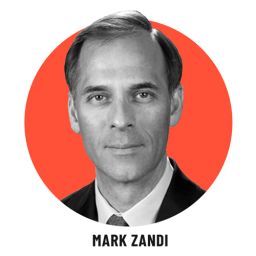Editor’s Note: Mark Zandi is chief economist of Moody’s Analytics. The opinions expressed in this commentary are his own.

The unemployment rate is a record low 3.7%. Wages are going up at a faster pace. Inflation has picked up. The Federal Reserve is tapping the breaks, and long-term interest rates are rising. The economy is red hot.
So it’s time we talk about the next recession.
I believe that the next recession is coming into view — the summer of 2020, to be precise.
The best long-leading indicator of an oncoming recession is when the economy passes through full employment. Economists endlessly debate the definition of full employment, but most think a good benchmark is a 4.5% unemployment rate. This is the so-called full-employment unemployment rate or natural rate of unemployment.
When the actual unemployment rate falls below the natural rate, wage growth accelerates, squeezing businesses’ profits and causing them to raise prices for their wares more quickly. The higher inflation prompts the Federal Reserve to tighten monetary policy, and long-term interest rates to rise. The economy eventually overheats.
The Fed hopes that it can tighten policy just enough to cool off the economy — by causing unemployment to rise back to its natural rate — before it overheats. A common metaphor is that the Fed is trying to pilot the economy to a soft landing. This is very tricky to do, and in fact the Fed rarely succeeds.
The problem is that once unemployment starts to rise, even from a very low level, a vicious cycle quickly develops. The increase in unemployment worries consumers who turn a bit more cautious in their spending. Businesses see that and hire fewer people. Unemployment rises some more. Consumers and businesses pull back more. The economy invariably crashes.
Soft-landing the economic plane gets harder the farther unemployment falls below the natural rate. That’s because unemployment has to rise more to get back to the natural rate before it overheats. It’s like the Fed is trying to land the economic plane when it is approaching the tarmac at 250 miles an hour.
Given the massive fiscal stimulus that’s temporarily juicing up the economy — deficit-financed tax cuts and increases in federal government spending — the unemployment rate appears headed to near 3% by the end of the decade. If so, the Fed will need to pilot the economy from a 3% to a 4.5% unemployment rate without crashing the economy. Hmmm.
If history is a guide, it takes approximately three years after the economy passes through full employment for a recession to ensue. Unemployment fell below the 4.5% natural rate in summer 2017, meaning the next recession will be in summer 2020.
Another very prescient leading indicator of recession is the Treasury yield curve, and it suggests the same thing. Typically, the curve is upward sloping, with yields on long-term bonds higher than on short-term securities. But leading up to recessions, the yield curve typically inverts, with short rates surging past long-term yields.
Inversions happen in the later stages of a business cycle when the Fed is pushing up short-term rates to head off developing inflationary pressures. Bond investors anticipate that the Fed’s actions will ultimately slow economic growth and inflation, and thus investors purchase more bonds. Long-term yields stabilize or even fall. Invariably the Fed pushes too hard and a recession ensues.
An inverted yield curve also makes it difficult for banks to earn an acceptable return on their lending. Financial institutions generally make money by borrowing short and lending long, as they say. This business model works well when the curve is positively sloped, but doesn’t when the curve inverts. Creditors are forced to rein in their lending, which exposes past lending mistakes and weighs on economic growth.
Most prophetic is the difference between the yield on 10-year Treasury bonds and three-month Treasury bills. With 10-year Treasury yields now just over 3%, quickly rising three-month bill rates are within three-quarters of a percentage point, which in times past has accurately signaled a coming problem. And although the yield curve is still a ways away from inverting, given expectations for the Fed to steadily tighten policy as unemployment falls, a fully inverted curve seems plausible as soon as next summer.
It’s trendy these days to argue that the yield curve has lost its power to predict recessions. Count me on the defense team. The yield curve remains as good a way to predict turning points in the economy as it has been. This time isn’t different, as some argue. Historically, an inverted curve occurs, on average, approximately one year before a recession. If our script for the yield curve plays out, then part of it would be a recession in summer 2020.
Buckle in.
















